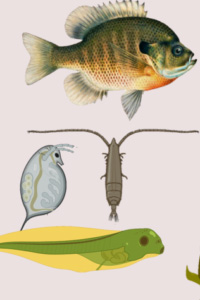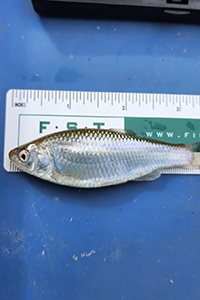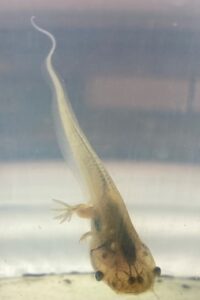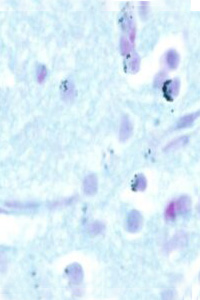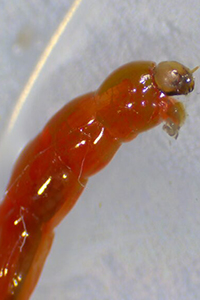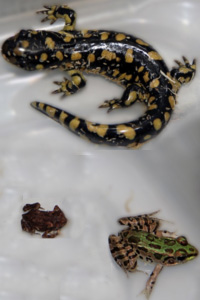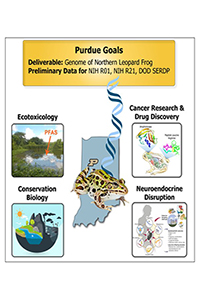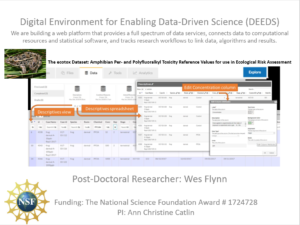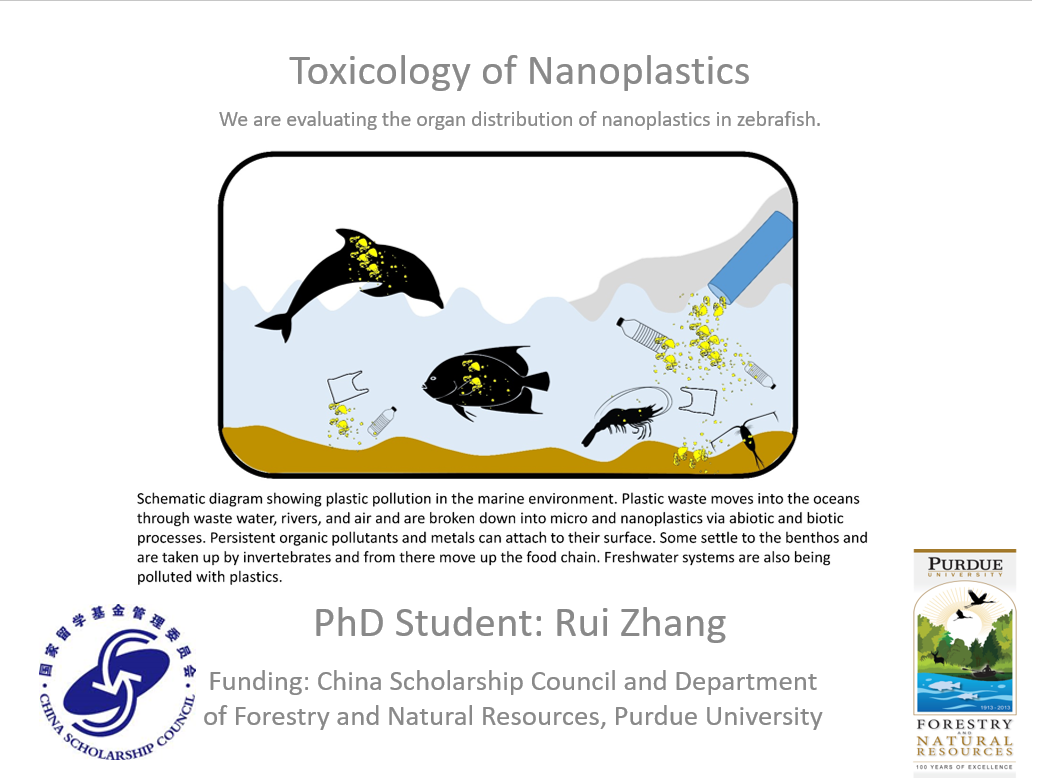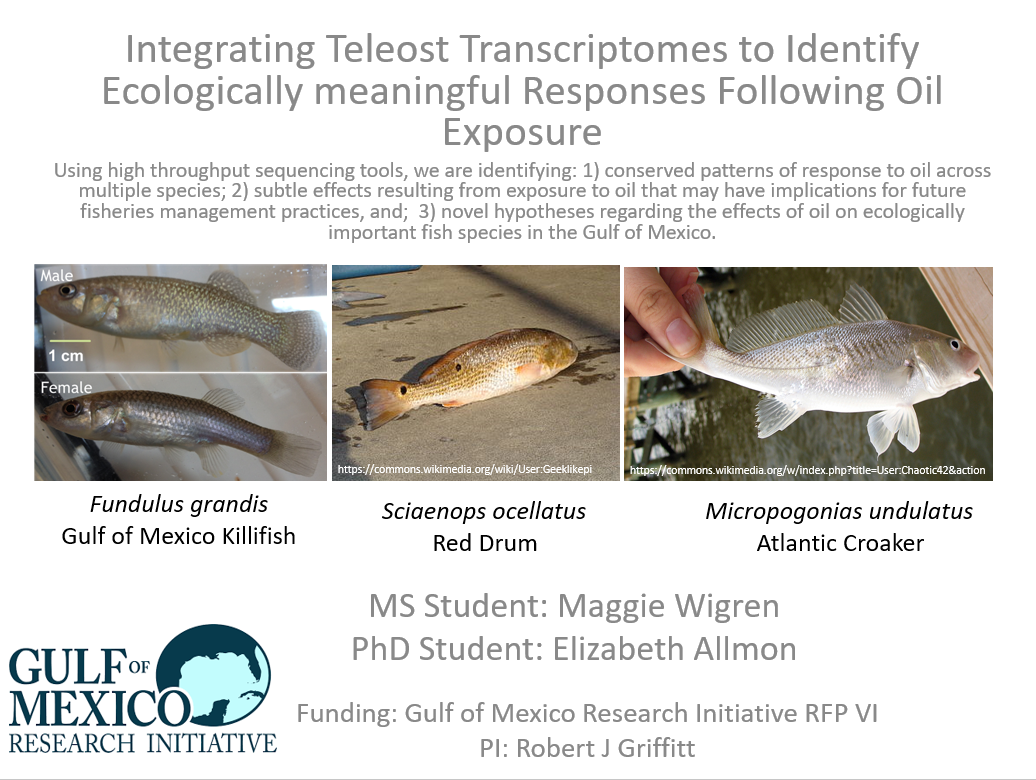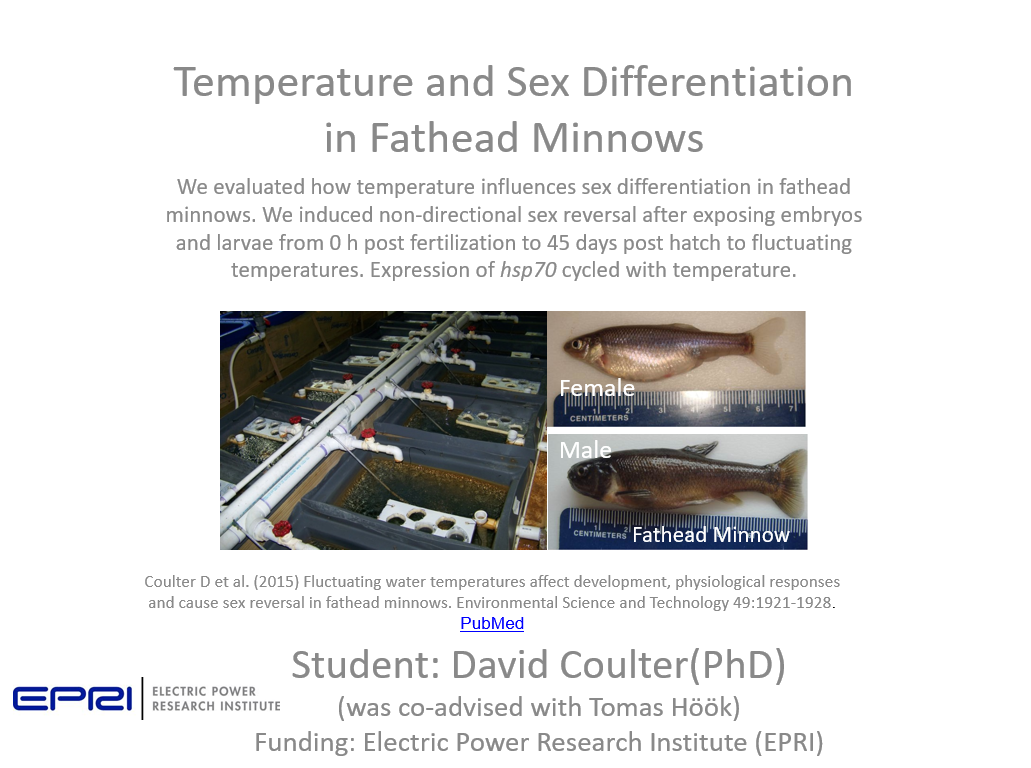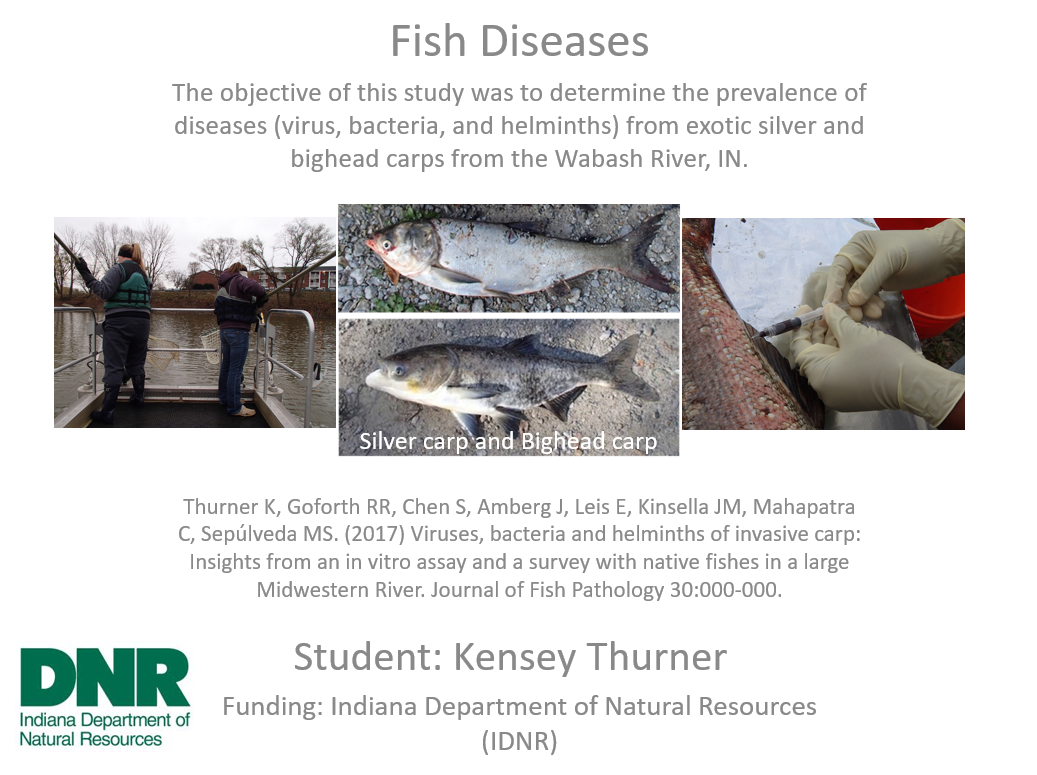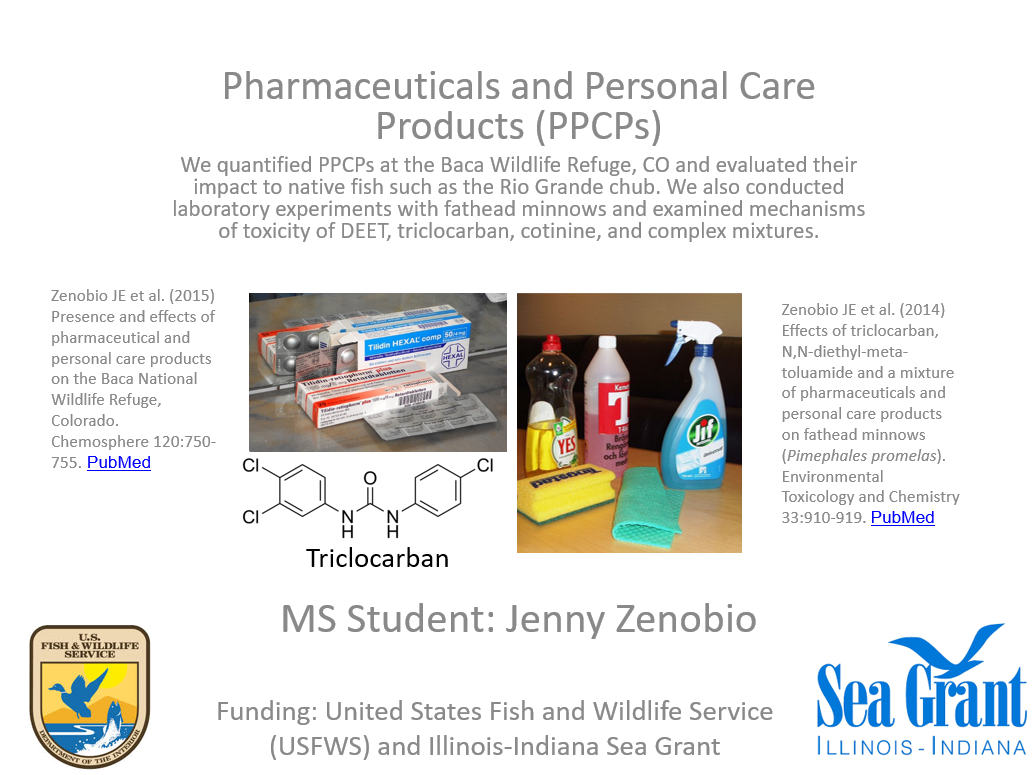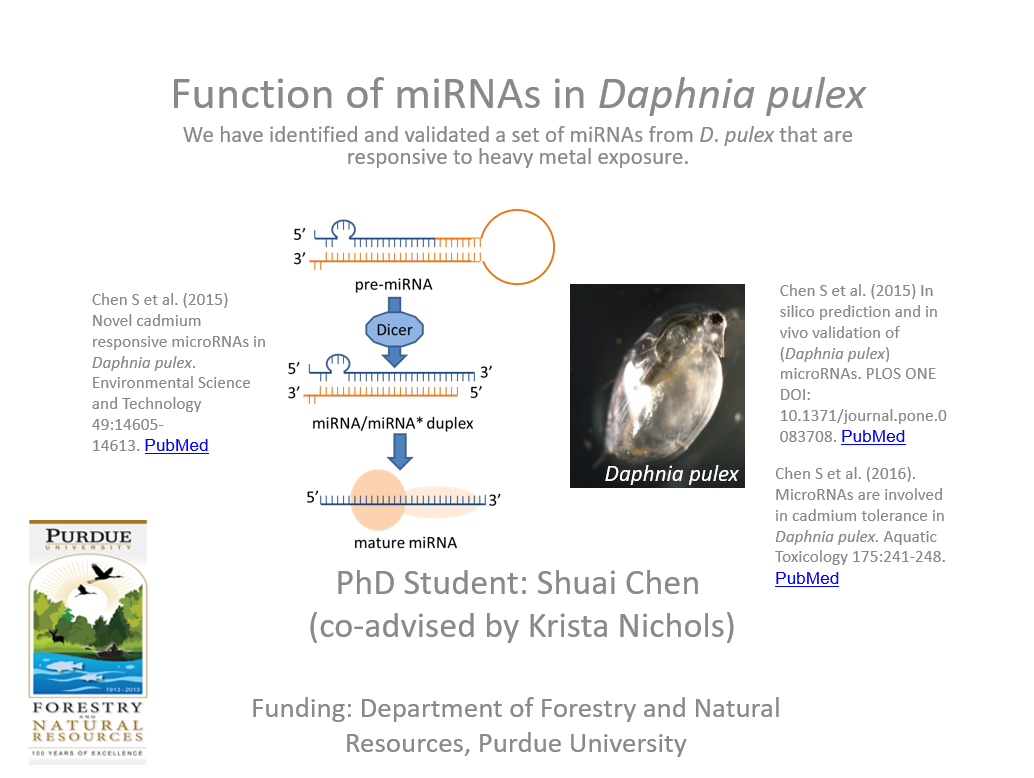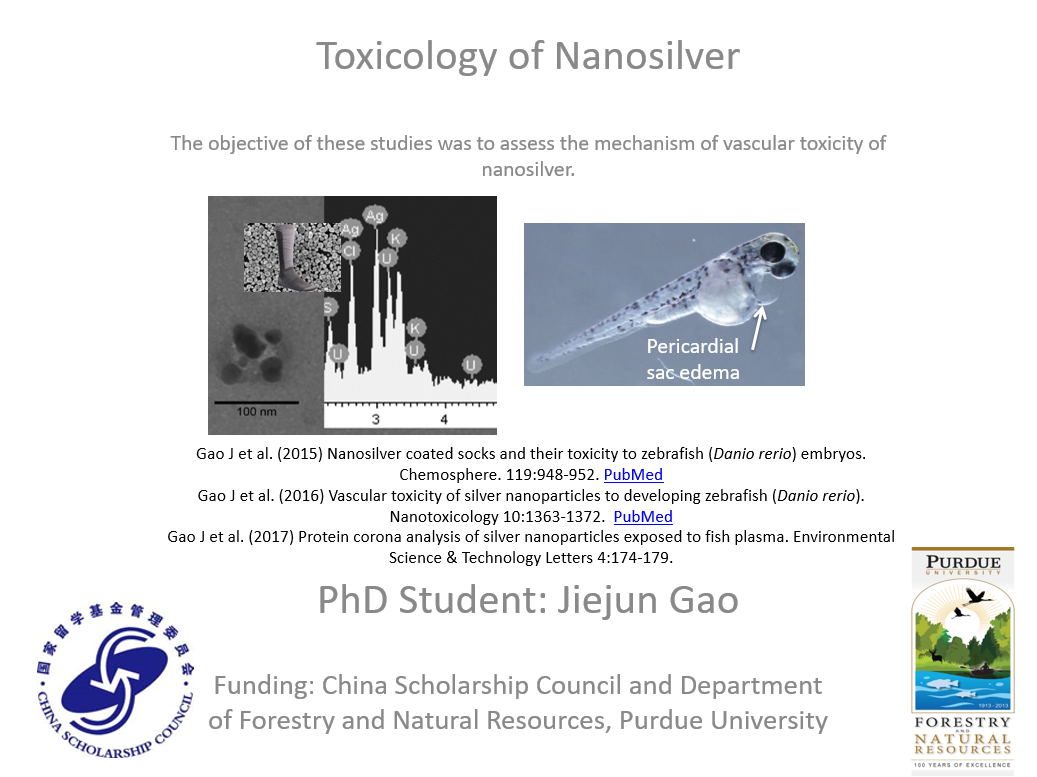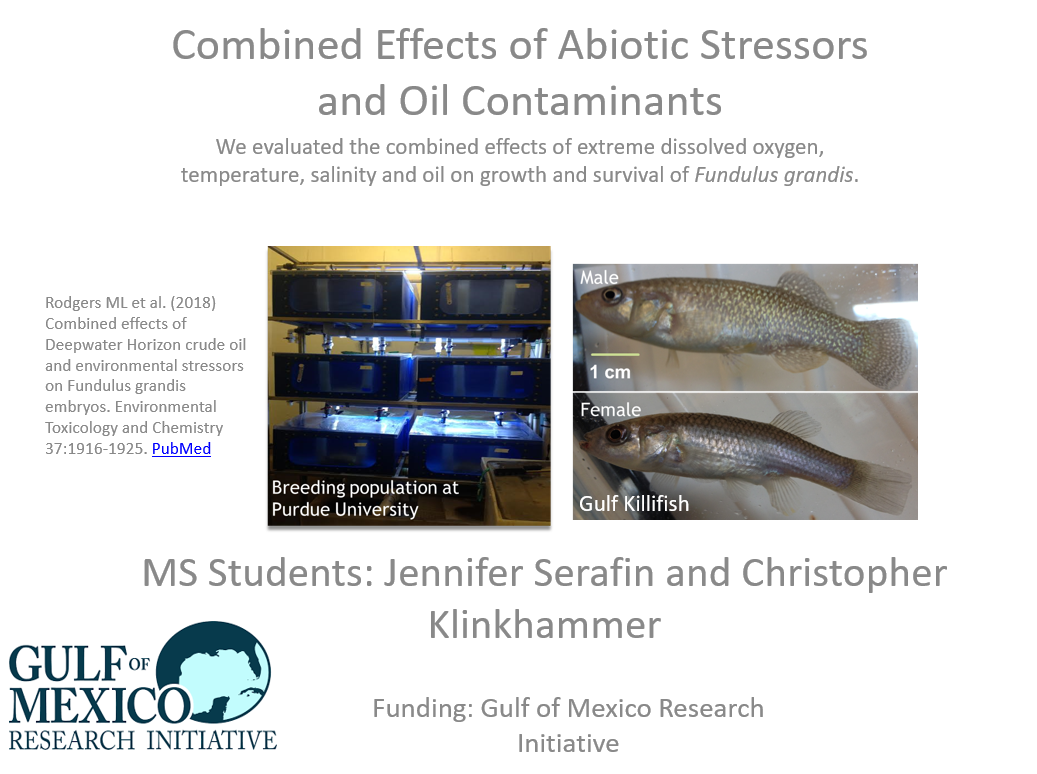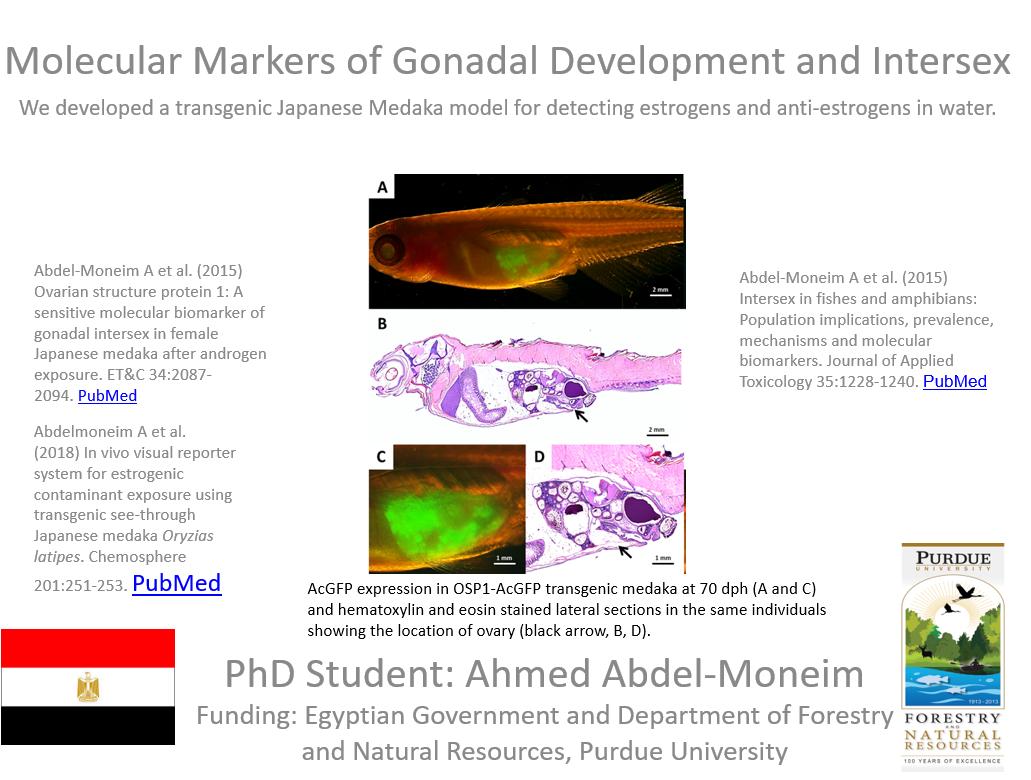Current Projects
Past Projects
We are building a web platform that provides a full spectrum of data services, connects data to computational resources and statistical software, and tracks research workflows to link data, algorithms and results.
Post-Doctoral Researcher: Tyler Hoskins
Funding: The National Science Foundation Award # 1724728
PI: Ann Christine Catlin
Using high throughput sequencing tools, we are identifying: 1) conserved patterns of response to oil across multiple species; 2) subtle effects resulting from exposure to oil that may have implications for future fisheries management practices, and; 3) novel hypotheses regarding the effects of oil on ecologically important fish species in the Gulf of Mexico.
MS Student: Maggie Wigren
PhD Student: Elizabeth Allmon
Funding: Gulf of Mexico Research Initiative RFP VI
PI: Robert J Griffitt
MS Student: Maggie Wigren
PhD Student: Elizabeth Allmon
Funding: Gulf of Mexico Research Initiative RFP VI
PI: Robert J Griffitt
We evaluated how temperature influences sex differentiation in fathead minnows. We induced non-directional sex reversal after exposing embryos and larvae from 0 h post fertilization to 45 days post hatch to fluctuating temperatures. Expression of hsp70 cycled with temperature.
Student: David Coulter(PhD) (was co-advised with Tomas Höök)
Funding: Electric Power Research Institute (EPRI)
We quantified PPCPs at the Baca Wildlife Refuge, CO and evaluated their impact to native fish such as the Rio Grande chub. We also conducted laboratory experiments with fathead minnows and examined mechanisms of toxicity of DEET, triclocarban, cotinine, and complex mixtures.
MS Student: Jenny Zenobio
Funding: United States Fish and Wildlife Service (USFWS) and Illinois-Indiana Sea Grant


